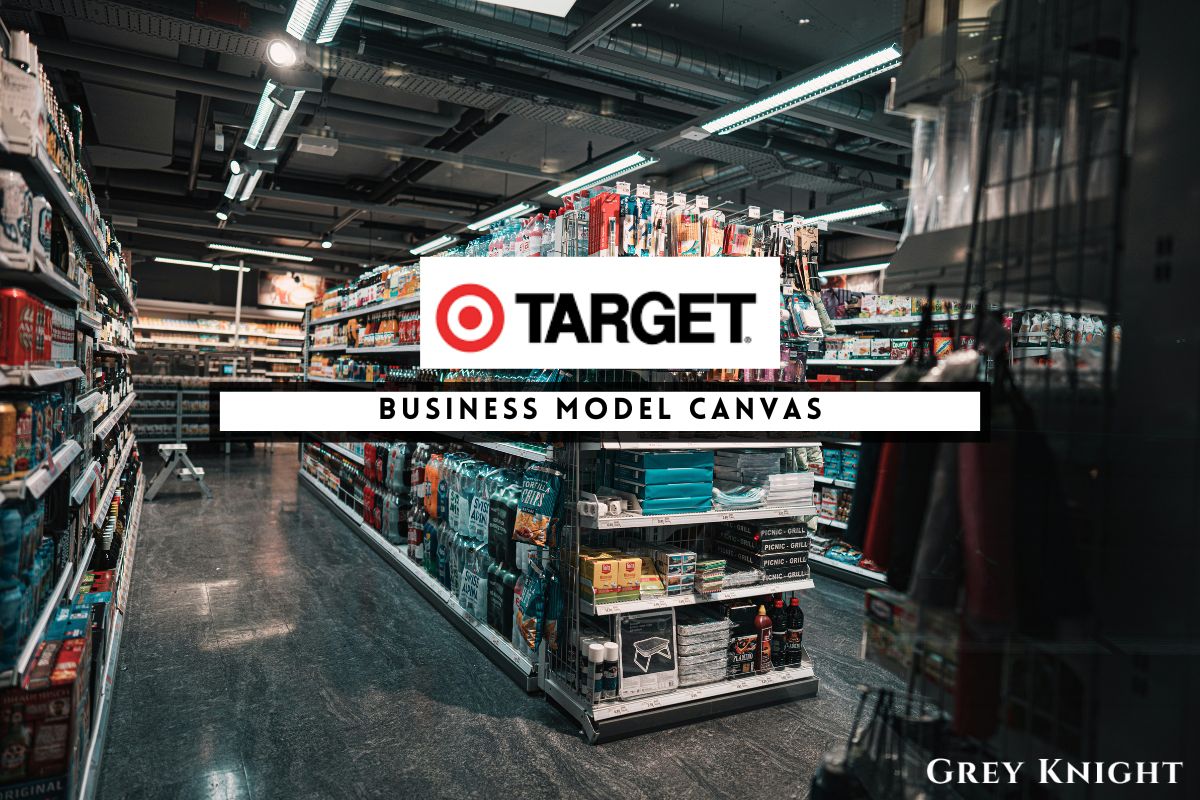Table of Contents
ToggleA Brief History of Target
Target Corporation was founded in 1902 as the Dayton Dry Goods Company by George Draper Dayton in Minneapolis, Minnesota. In 1962, the company opened its first discount store, which evolved into the brand we know today as Target. The company continued to expand and innovate, introducing new concepts such as the Target mascot Bullseye, and the red Bullseye logo.
Target has grown to become one of the largest retail chains in the United States, offering a wide range of products including clothing, electronics, home goods, and groceries. The company has also expanded internationally, with stores in Canada and partnerships with international brands.
Target has continued to evolve with the times, embracing e-commerce and digital technology to reach customers online and in-store. The company has also made strides in sustainability and social responsibility, aiming to be a leader in corporate social responsibility.
Overall, Target Corporation has a rich history of growth and innovation and continues to be a prominent player in the retail industry.
Who Owns Target?
Target Corporation is a publicly traded company, which means that it is owned by its shareholders. The largest shareholders of Target Corporation are typically institutional investors, such as mutual funds and pension funds, as well as individual investors who own shares of the company. As of the most recent filings, the top 10 shareholders of Target Corporation are The Vanguard Group, BlackRock, State Street Corporation, Fidelity Investments, T. Rowe Price, Northern Trust Corporation, Geode Capital Management, Bank of America, Morgan Stanley, and Wells Fargo. These shareholders collectively hold a significant portion of the company’s outstanding shares and play a major role in influencing the company’s direction and decision-making.
Target Mission Statement

Target Corporation’s mission statement is to “make Target the preferred shopping destination for our guests by delivering outstanding value, continuous innovation, and an exceptional guest experience by consistently fulfilling our Expect More, Pay Less brand promise.” This mission emphasizes the company’s focus on providing high-quality products at affordable prices and creating a welcoming and enjoyable shopping experience for its customers. Target strives to exceed the expectations of its guests while also remaining committed to innovation and delivering value.
How Target Makes Money?
Target Corporation operates as a general merchandise retailer, with a business model centered around offering a wide range of products at competitive prices. The company generates revenue primarily through the sale of merchandise in its stores and through its online platform. Target also earns money through various services, including Target RedCard, Target Circle loyalty program, and Target’s same-day delivery options. Additionally, the company generates revenue from its private label brands and partnerships with exclusive and niche merchandise suppliers. Overall, Target focuses on providing a diverse and seamless shopping experience to its customers, which in turn drives its revenue stream.
Target Business Model Canvas
The Business Model Canvas is a strategic management tool that provides a visual representation of a company’s business model. It allows businesses to outline key components of their operations and establish a clear understanding of how they create, deliver, and capture value. The nine key elements of the Business Model Canvas are Customer Segments, Value Propositions, Channels, Customer Relationships, Revenue Streams, Key Resources, Key Activities, Key Partners, and Cost Structure.
Customer Segments:
1. Mass Market: Target serves a wide range of customers, including individuals and families of different income levels and demographics.
2. Demographics: Target targets specific demographic groups based on gender, age, income, and location.
3. Household types: Target appeals to various types of households, from single individuals to families and empty-nesters.
Value Propositions:
1. Affordable Pricing: Target offers a variety of products at competitive prices to attract cost-conscious customers.
2. Quality and Selection: Target provides high-quality products and a wide selection of brands and merchandise categories.
3. Convenience: Target offers a convenient shopping experience, including online and in-store options, as well as various services such as order pickup, delivery, and in-store fulfillment.
Channels:
1. Physical Stores: Target has a network of over 1,800 brick-and-mortar stores across the United States.
2. E-commerce Platform: Target operates a robust online platform to reach customers in different locations and offer convenient shopping options.
3. Mobile App: Target has a mobile app to enhance the digital shopping experience for its customers.
Customer Relationships:
1. Personalized Marketing: Target uses customer data to personalize marketing efforts and engage with customers on a more individual level.
2. Loyalty Programs: Target offers loyalty programs and promotions to encourage repeat purchases and build customer loyalty.
3. Customer Service: Target provides responsive customer service through multiple channels, including in-store, online, and over the phone.
Revenue Streams:
1. Product Sales: Target generates revenue through the sale of various products, including apparel, household essentials, electronics, and more.
2. Services: Target also earns revenue from services such as in-store fulfillment, delivery, and financial services like RedCard transactions.
3. Advertising: Target generates ad revenue through partnerships and advertising on its online and in-store platforms.
Key Resources:
1. Physical Stores: Target’s brick-and-mortar locations serve as key resources for providing products, customer service, and generating sales.
2. Logistics and Distribution: Target’s supply chain, distribution centers, and logistics capabilities are critical for maintaining inventory and fulfilling customer orders.
3. Brand and Reputation: Target’s brand and reputation are key resources that drive customer trust and loyalty.
Key Activities:
1. Merchandising and Product Sourcing: Target engages in the sourcing, selection, and display of products to appeal to customer needs and preferences.
2. Marketing and Promotion: Target conducts marketing activities to drive brand awareness, customer acquisition, and sales.
3. Supply Chain Management: Target manages its supply chain and logistics to ensure timely and efficient delivery of products to customers.
Key Partners:
1. Suppliers and Vendors: Target partners with various suppliers and vendors to source products and maintain inventory.
2. Payment Providers: Target partners with payment providers to process transactions and offer financial services.
3. Digital Platforms: Target partners with digital platforms and technology providers to enhance its e-commerce and digital capabilities.
Cost Structure:
1. Cost of Goods Sold: Target incurs costs for purchasing products from suppliers and vendors.
2. Operating Expenses: Target has expenses related to rent, utilities, payroll, marketing, and other day-to-day operations.
3. Technology and Digital Investments: Target invests in technology and digital capabilities, such as e-commerce platforms and mobile apps, which incur costs for development and maintenance.
Target’s Competitors
Target Corporation faces stiff competition from several major retailers in the United States. Its top five competitors include Walmart, Amazon, Costco, Best Buy, and Dollar General. Walmart is the largest retailer in the country and offers a wide range of products at competitive prices. Amazon is an online powerhouse that carries a vast selection of goods and offers speedy delivery options. Costco is known for its membership-based warehouse stores and competitive pricing on bulk items. Best Buy is a leading electronics retailer with a strong online presence. Dollar General operates smaller, convenience store locations and offers a variety of household items at discount prices. Target competes with these companies by offering a diverse range of products, as well as a growing online presence and convenience store locations.
Target SWOT Analysis
Strengths
1. Strong brand recognition and reputation
2. Wide range of products and services
3. Effective supply chain management
4. Strong presence in the United States
Weaknesses
1. Limited international presence
2. Dependence on seasonal sales
3. High competition in the retail industry
4. Negative publicity and data security breaches
Opportunities
1. Expansion into new markets
2. E-commerce growth
3. Introduction of new product lines
4. Strategic partnerships and acquisitions
Threats
1. Economic downturns and consumer spending patterns
2. Intense competition from Amazon and other online retailers
3. Changing consumer preferences and market trends
4. Retail regulations and legal challenges
Concluding Analysis
As I reflect on the business model of Target Corporation, I am impressed by its ability to adapt and innovate in the ever-changing retail landscape. The company’s focus on expanding its e-commerce business, revamping its store layout, and investing in exclusive brands has positioned it for continued success in the future. Target’s commitment to sustainability and social responsibility also sets it apart from its competitors and resonates with a growing number of consumers. As an analyst, I am confident that Target Corporation will continue to thrive by staying ahead of industry trends and meeting the evolving needs of its customers. I look forward to watching the company’s continued growth and success in the years to come.
Additional Resources
To keep learning and advancing your career, we highly recommend these additional resources:
Business Model Canvas of The Top 1,000 Largest Companies by Market Cap in 2024
A List of 1000 Venture Capital Firms & Investors with LinkedIn Profiles
Peter Thiel and the 16 Unicorns: The Legacy of Thiel Fellowship












